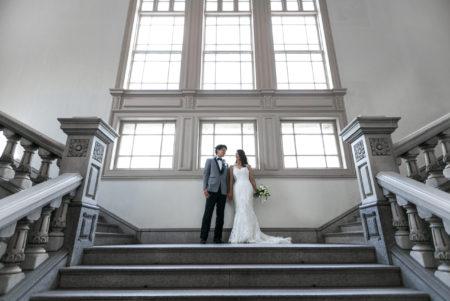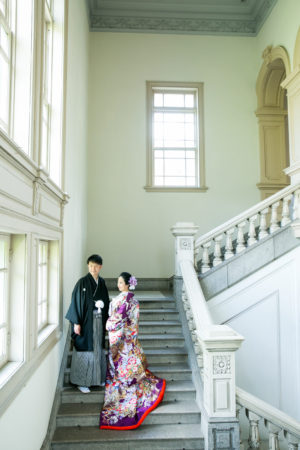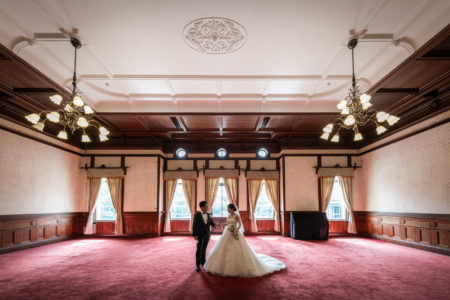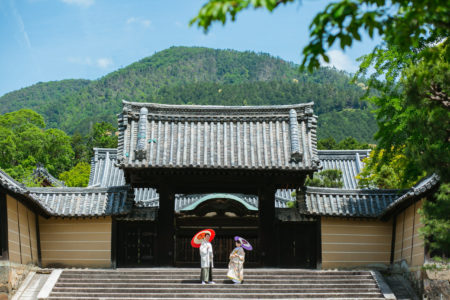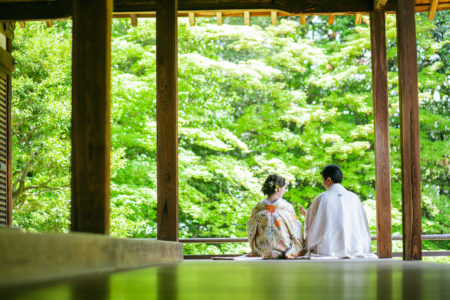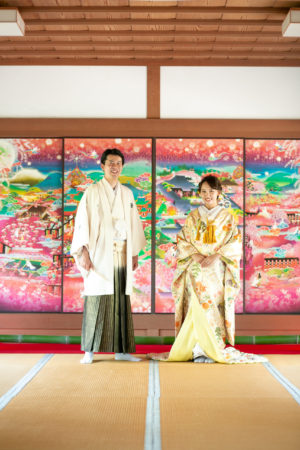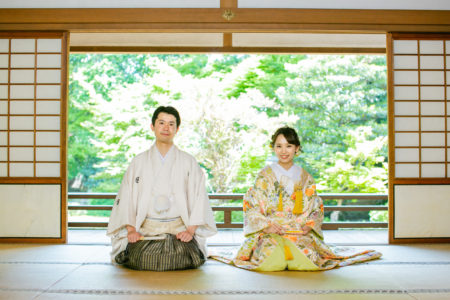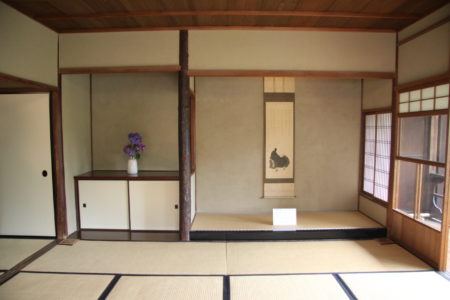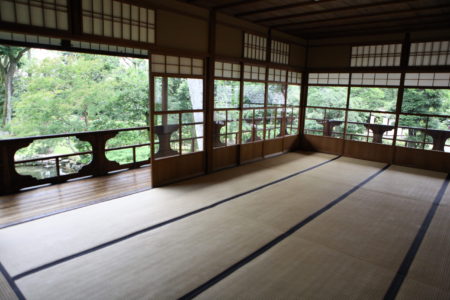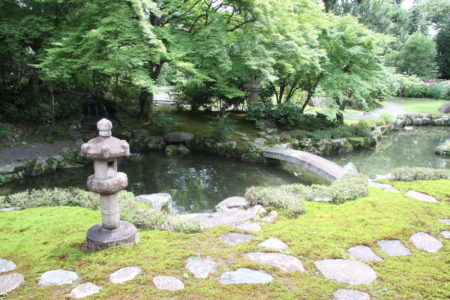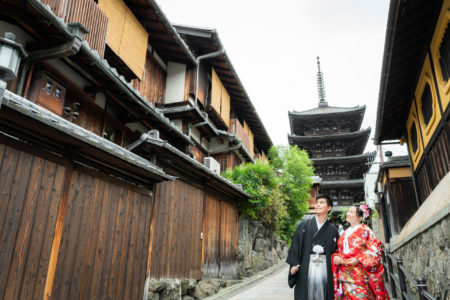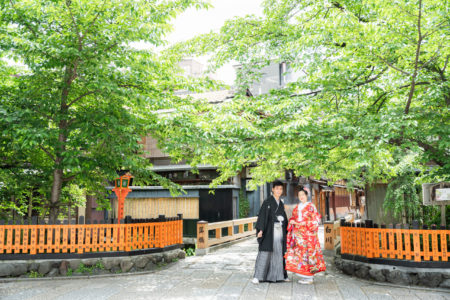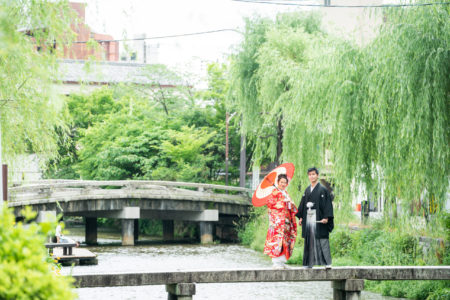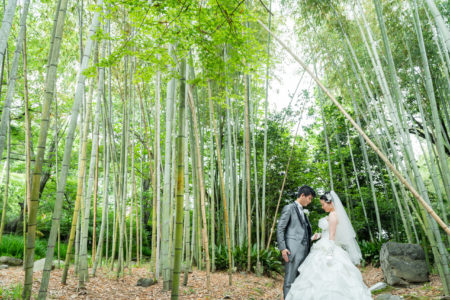こんにちは!
本日は、ご招待状についてお話させて頂きます。
ご招待状はゲストの皆様のお手元に届くもの。こだわって選びたいですよね。
和婚の場合、やはり和の雰囲気のご招待状がぴったりです。
今ではいろいろなデザインがあり、シンプルで上品なものから
色打掛をイメージした華やかなデザインのご招待状まで、さまざまです!
- 昇鶴…おめでたい鶴とゴールドのデザイン。シンプルですがおめでたい印象です
- “Shoukaku” : a congratulatory crane and gold design. It is simple but has a festive impression.
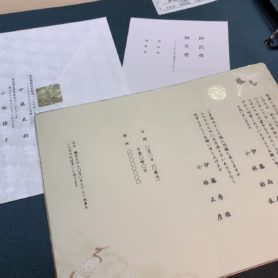
- 七宝…「円満」を意味する、縁起の良いお柄「七宝柄」があしらわれております
- “Shippo” : Decorated with a good luck pattern, which means “harmony and peace”.
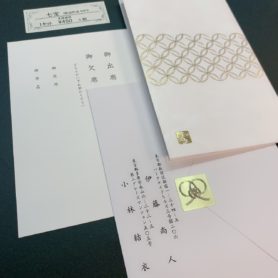
- 季粋〜紅〜…赤の色打掛とゴールドの帯をイメージした和風なデザインです
- “Kisui” : A Japanese style design inspired by red iro-uchikake with gold obi.
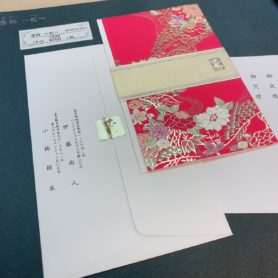
- 彩花…古典的なお柄と大正ロマンを思わせる色使いで和モダンな雰囲気です
- “Saika” : Classic patterns and colors reminiscent of the Taisho era’s romanticism creates a modern Japanese atmosphere.
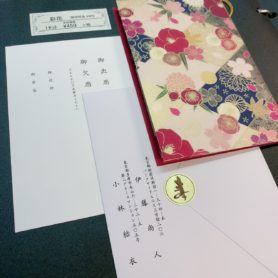
このほかにもたくさんのデザインをご用意させて頂いておりますので、実際にご覧頂きながら
新郎新婦様のお好みのご招待状をお選び頂いております!
さて、ご招待状の差出人様には4パターンございます。
➀新郎新婦様の場合
…「おふたりがゲストの皆様をおもてなしする」という、柔らかくカジュアルなイメージ
➁親御様の場合
…「ご両家様でゲストの皆様をおもてなしする」という、昔ながらのかっちりとしたイメージ
➂新郎新婦様主体の親御様との連名
➃親御様主体の新郎新婦様との連名
…➀と➁の間をとるイメージです
※差出人につきましては親御様のご意見も伺われることをおすすめします!
差出人様が決定しましたら、次は文例選びです。
文例は差出人によって変わってまいりますが、文を作る際には下記の2点を必ず注意します
※注意点
➀句読点は使わないこと
→終わりを意味する「。」や途切れる・切れるを意味する「、」等は使わず、
1マススペースを空けて文章を区切るようにします
➁「忌み言葉」を使わないこと
→「忙」…「心を亡くす」と書くため「ご多用中」等を使います
「重ね重ね」「度々」等繰り返しを意味する言葉は使わないようにします
ご招待状はご結婚式の2ヶ月前に発送、1ヶ月前に返信期日の流れが一般的です。
発送の際に消印のつくお日にち、返信期日のお日にちに関しては
「大安」「友引」などのお日柄の良いお日にちがおすすめです。
封筒の宛名書き(筆耕)に関しては「毛筆」がより丁寧とされております。
(最近は印刷筆耕も多いですが、やはりプロ筆耕の毛筆の宛名書きでお送りすると
ゲストの皆様からも印象が良く、喜んでくださったというお声をよく伺います^^)
また、使う切手は必ず「慶事用」を用意しましょう。
郵送での発送の際に封筒に貼付頂く切手…94円
※念のため重さを計量して94円で大丈夫か確認してくださいね
返信ハガキに貼付頂く切手…64円
(郵送する際、京都中央郵便局で「風景印お願いします」とお伝え頂くと、
舞妓さんのデザインされた京都らしい消印を押してくださいます!とってもかわいいですよ〇)
ご招待状はとっても重要なアイテムです。
LSTではプランナーがより詳しくしっかりとご説明をさせて頂きながら
ゲストの皆様に失礼のないよう、ご招待状のお打合せを進めさせて頂いております。
素敵なご招待状になりますように、お手伝いさせて頂ければと存じます^^
LSTプランナー 青雲美涼
THE WEDDING INVITATION / KYOTO WEDDING
Hello!
Today, we’re going to talk about invitations.
Your invitations are the ones that will be delivered to your guests. You want to choose them carefully, don’t you?
For Japanese weddings, surely Japanese style invitations are perfect.
Nowadays, there is a wide variety of designs available, from simple and elegant to gorgeous ones inspired by iro-uchikake (=wedding kimono with patterns and colors).
There are many more designs available for you to take a look and see for yourself. The bride and groom can choose the design of their own choice!
There are 4 ways in putting the name as a sender of the invitation.
1) Bride and Groom names
It gives friendly and casual image like “the bride and groom welcome the guests”.
2) Parents’ names
The traditional, formal image that both families are going to receive their guests.
3) Co-name of the bride and groom with their parents
4) Parents led co-name with the bride and groom
These are positioned between 1) and 2).
*We recommend that you ask your parents for their opinion.
Once you’ve decided on the sender, the next step is to choose the wording.
It will vary on the sender, but be sure to keep the following two points in mind when you choose the wording.
*Note
1 ) Don’t use punctuation.
→Do not use “。” means “the end”, and “,” which means “to break off” or “cut off”. Leave one space to separate sentences.
2) Avoid the use of “tabooed words”
→For example, the character “忙 (means busy)” consists of two characters each of them means “mind” and “loss” and therefore considered “losing your mind”. So we should avoid using “忙(busy)”, and instead saying “while you have many things to do”.
Also, the words implying repetition, “kasane gasane (over and over)” or “tabi tabi (time after time)” should not be used.
Invitations are generally sent out 2 months before the wedding with the date of return set 1 month before the wedding.
We recommend you to post them or set the return date on “Taian” or “Tomohiki” by following Japanese Buddhist calendar for better fortune.
As for addressing the envelopes, it is considered that with “brush” are more polite. (Although there are many printed ones in brush script font these days, we heard the envelopes addressed in real brush strokes by professional were well received and impressed the guests.)
Also, be sure to have the postage stamps specially designed for the celebrations.
The price of the stamp for the standard size envelope: 94 yen
*Please check the weight of the envelope, just in case.
The price of the stamps to be attached for the return postcard: 64 yen
(If you post them from Kyoto Central Post Office, ask them to stamp “Fukei-in)(=landscape)” postmark. It is very Kyoto like postmark with cute Maiko design.
Invitations are a very important item.
At LST, our planner will explain every details to the clients so that they can prepare the perfect invitations.
I will be happy if I can help you to prepare the perfect invitations.
By Misuzu AOMO / LST Wedding, Wedding Planner
